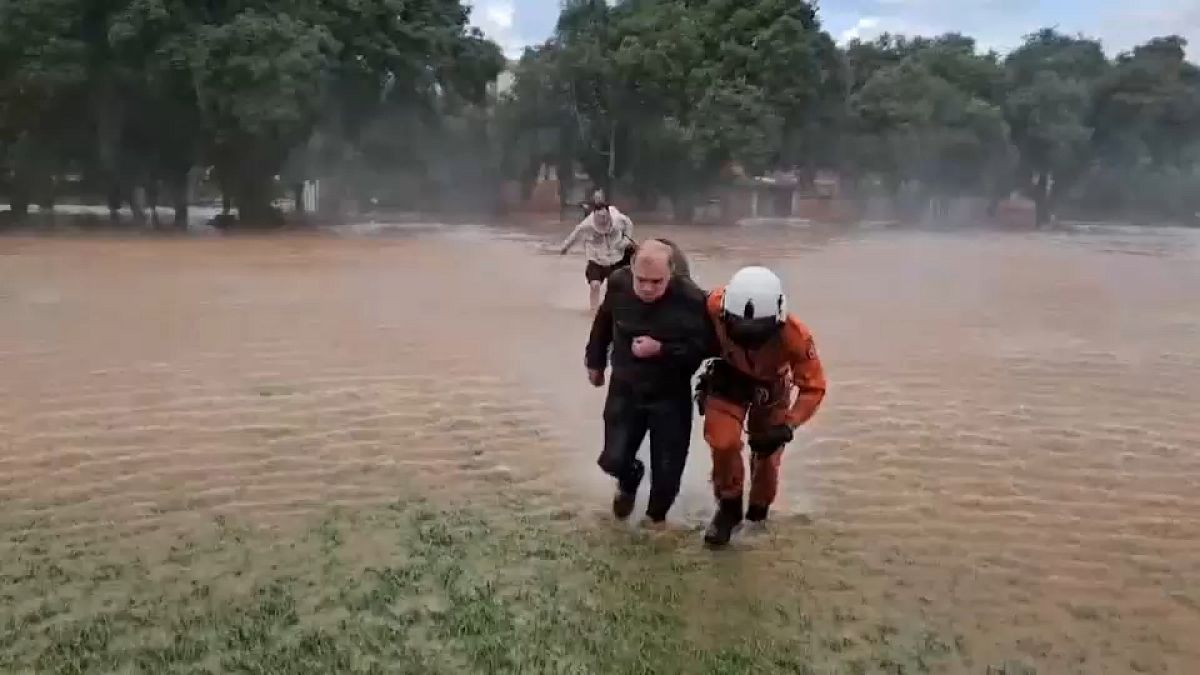Massive floods have devastated Brazil’s southern Rio Grande do Sul state, with at least 60 people confirmed dead and another 101 reported missing, according to local authorities. The state governor expects the death toll to rise as emergency workers begin to reach previously inaccessible areas. In the town of Feliz, a bridge connecting it to Linha Nova was swept away by a swollen river, highlighting the extent of the destruction caused by the floods. Landslides, washed-out roads, and collapsed bridges have left a trail of devastation across the state.
The floods have had a profound impact on communities in Rio Grande do Sul, with many residents facing the loss of homes, livelihoods, and loved ones. The state government has mobilized emergency workers to assist with search and rescue operations, as well as to provide aid to those affected by the disaster. The full extent of the damage is still being assessed, but it is clear that rebuilding efforts will be extensive and costly.
The floods in Rio Grande do Sul serve as a stark reminder of the power of nature and the importance of preparedness in the face of natural disasters. Climate change is contributing to an increase in extreme weather events, including heavy rainfall and flooding, making it essential for communities to be ready to respond effectively to emergencies. As the effects of climate change continue to be felt around the world, it is crucial for governments at all levels to prioritize disaster preparedness and resilience.
In the aftermath of the floods, the focus is on providing support to those affected and rebuilding the communities that have been devastated. Emergency shelters have been set up to provide temporary housing for displaced residents, while relief efforts are underway to ensure that basic needs such as food, water, and medical care are met. The road to recovery will be long, but with the support of the international community and the resilience of the people of Rio Grande do Sul, it is hoped that affected areas can be rebuilt stronger and more resilient than before.
The floods in Rio Grande do Sul have drawn attention to the need for investment in infrastructure and disaster risk reduction measures to mitigate the impacts of future disasters. By implementing sustainable urban planning practices, improving early warning systems, and investing in resilient infrastructure, communities can better prepare for and respond to natural disasters. In the face of climate change, taking proactive steps to build resilience is essential to protect lives, livelihoods, and the environment.
As the recovery process begins in Rio Grande do Sul, it is clear that the region will need support from both domestic and international partners to rebuild and strengthen its communities. By working together to provide aid, resources, and expertise, we can help the people of Rio Grande do Sul recover from this devastating disaster and build a more secure future. With a focus on resilience, preparedness, and community solidarity, we can learn from the lessons of the floods and create a more sustainable future for all.











